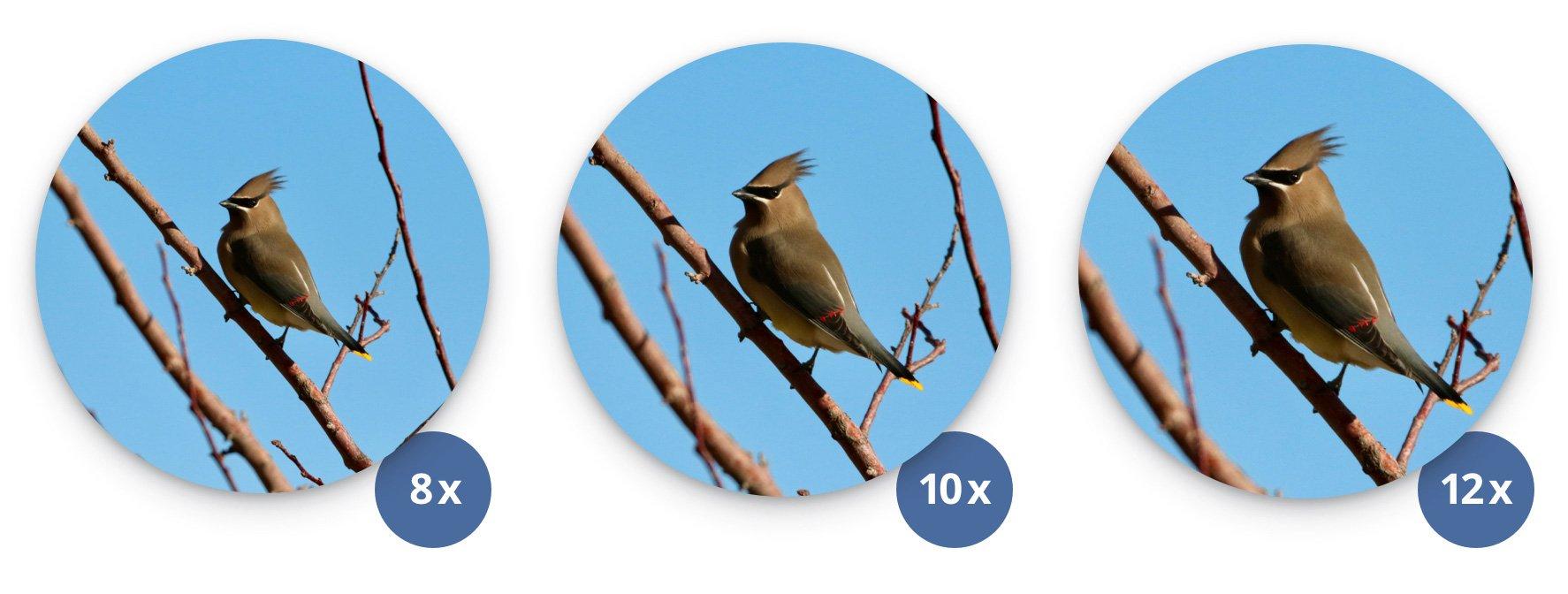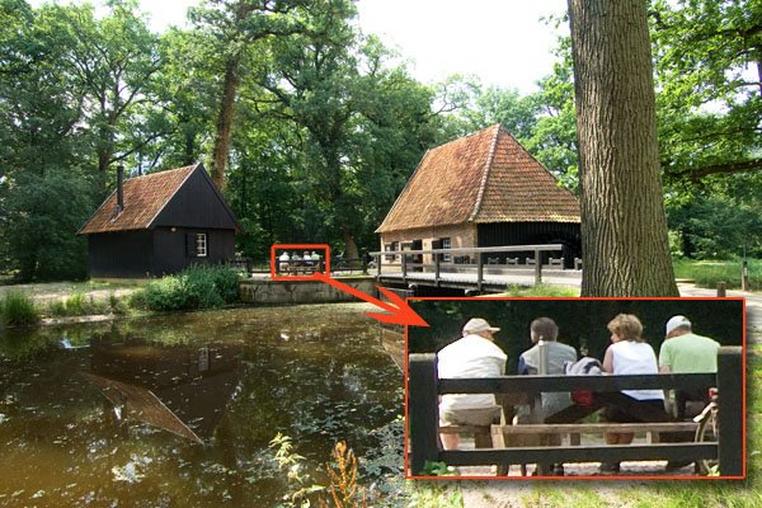Magnification factor - Binoculars
Each pair of binoculars comes with a numerical specification, such as 8x42. The first number (in this case, 8) indicates the magnification of the binoculars. In this example, the subject is brought 8 times closer to the viewer. If a subject is located 80 metres away, you will view this subject as if it were only 10 metres away from you.

The second number indicates the diameter of the objective or front lens, measured in millimetres. The higher the number, the more light that enters the binoculars and the lighter the image will be. This is a very important factor to be considered when the binoculars are to be used in poor or low light conditions (See also 'Exit pupil', 'Clarity and brightness' and 'Twilight factor').
Determining the magnification factor
It is quite tempting to want to purchase binoculars with the highest magnification factor possible. After all, the stronger the magnification, the better you can see your subject. And yet this is not actually the case. First of all, the magnification factor has a direct effect on the exit pupil, the twilight factor and also the relative brightness.
The stability of the binoculars also presents a problem. Not only is your subject magnified, but so are the movements made by the binoculars. Compare this with a camera. Using a wide angle lens and longer shutter speeds, you can take photos without motion blur. But with a telephoto lens you can't. Magnification factors starting from 10x affect our ability to hold binoculars steady enough for the image to remain fairly still. It is therefore essential to use a tripod or an image stabilisation system.
Furthermore, binoculars with a high magnification factor generally tend to be heavy and rather cumbersome and so they are quite a burden to carry around and use. Your binoculars may well be of really top-grade quality, however, if they are just lying on the table at home because they are simply too heavy, then they obviously do not come up to scratch. If this is the case, you need to compromise!
In general, as the magnification increases, the depth of field decreases. This fact is one of the disadvantages of binoculars with high magnifications. At very high magnifications, the depth of field can be so shallow that precise focusing is critical. This is another factor that requires careful consideration. In conclusion, large binoculars very often come with a high price tag. It is just as well that you only feel this pain once!
Average magnification: 7-10x, general use
Low magnification: 4-6x,
High magnification: >10x







